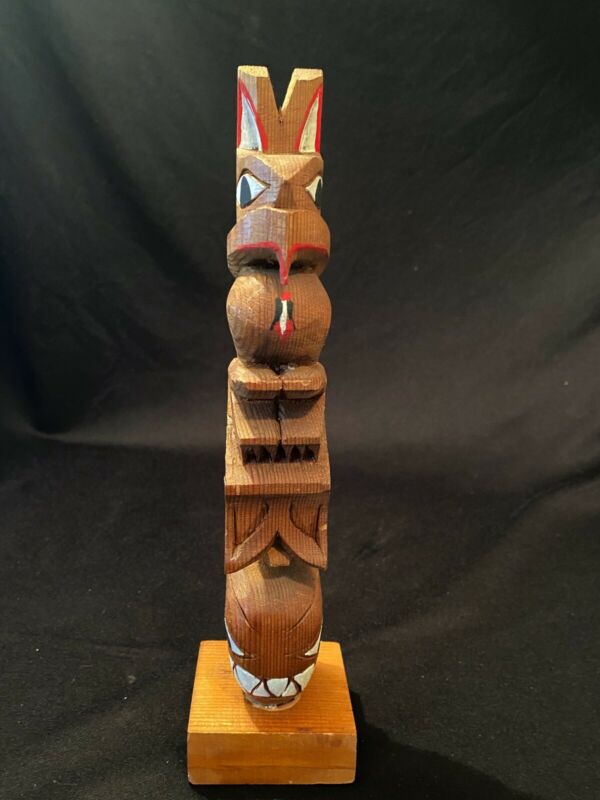-40%
Bill Reid Signed Haida Grizzly Bear Serigraph Print 329/600
$ 1584
- Description
- Size Guide
Description
The silkscreen prints of Bill Reid are now iconic. Reid popularized Northwest Coast Native Art, and his prints were key to this revitalization because they were portable and made in multiples. This 'Grizzly Bear' print is amongst his most famous prints. It is numbered 329/600 and is from 1973. This vintage piece by Canada's most celebrated First Nations artist is a great addition to any collection.A formal fine art appraisal will be included with this print. The print will be shipped unframed and tubed. This tube should be taken straight to a reputable framer. Sales are final.
William Ronald Reid, or Bill Reid, was a world renowned sculptor, and is now regarded as one of Canada’s finest artists. Bill was also a descendant of the great Haida carver and silversmith, Charles Edenshaw. He did not elect to study art in high school, but he did recall a young substitute teacher, Jack Shadbolt, who read poetry and introduced Kandinsky-style drawing to his class of 8th graders. Bill's adult career surprisingly began in broadcasting as a radio announcer. His clear, deep, and resonant voice took him to a variety of stations, including ten years with CBC in Toronto, ON, and Vancouver, BC. While Bill was working on Toronto, two events proved to be formative to his career as an artist: he studied jewellery making at the Ryerson Institute of Technology, and he became acquainted with the collection of Northwest Coast Native art in the Royal Ontario Museum. Of particular interest to him was a great pole from his mother’s ancestral village, Tanu. It was during this time that Bill began to explore his cultural heritage, and the art of the Haida people. Before he left CBC in 1958, Bill wrote and narrated a television documentary that explored salvaging the last totem poles of the Queen Charlottes. He also narrated a film documenting the People of the Potlatch exhibition at the Vancouver Art Gallery. When Bill Reid returned to the West Coast, he began to seriously pursue Native imagery in both jewellery and sculpture. Soon after his arrival, he was engaged in a four-year task to recreate a section of a Haida Village for the University of British Columbia in Vancouver, BC. This task was the turning point for Bill Reid’s incredible artistic career that saw him produce remarkably intricate jewellery, large sculptures, drawings, and silkscreen prints. Bill created numerous masterpieces, including The Skidegate Pole in 1978, the yellow cedar sculpture Raven and the First Men for the Museum of Anthropology in Vancouver, BC, in 1980, the bronze sculpture Lord of the Under Sea for the Vancouver Aquarium in 1984, the cedar canoe Lootas for Expo ’86, and the bronze sculpture Spirit of Haida Gwaii for the Canadian Embassy in Washington, DC, in 1990. There is also a bronze cast of the Spirit of Haida Gwaii at the International Departures Terminal at Vancouver International Airport. In addition, this sculpture was featured on Canada's twenty dollar bill. In 1994, he received the prestigious Order of Canada from the Canadian Government. Bill Reid passed away in 1998.
"Bill Reid Bear", "Reid Grizzly Bear", "Haida Bear Print", "Bill Reid prints"









